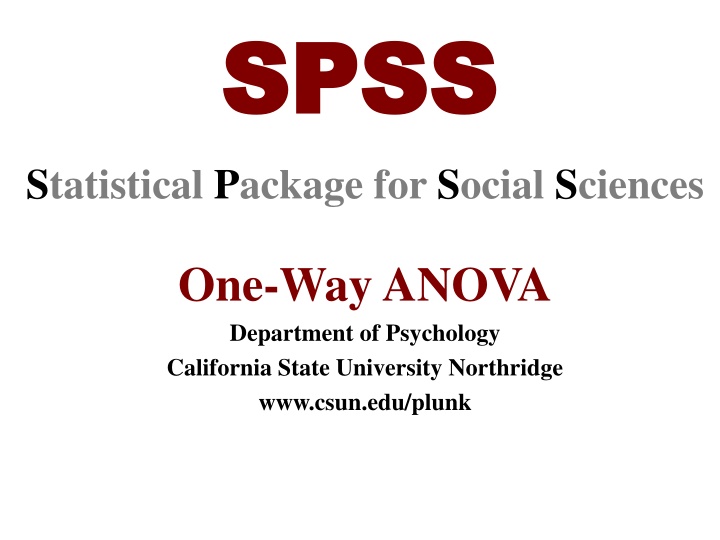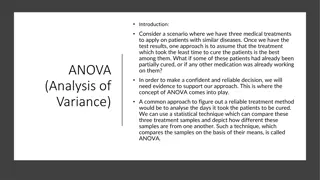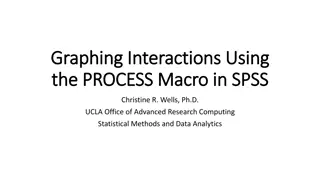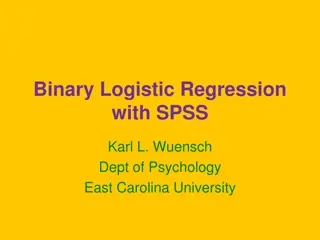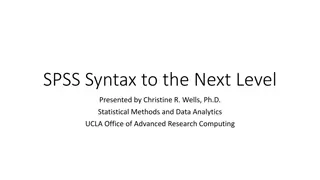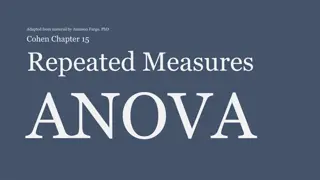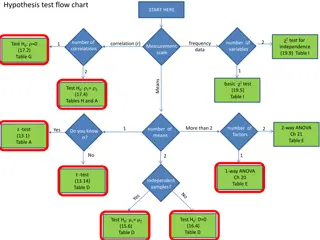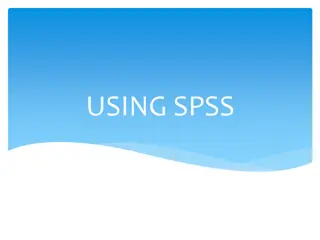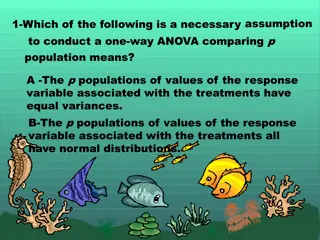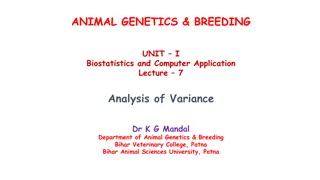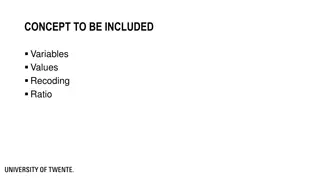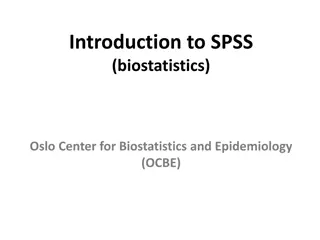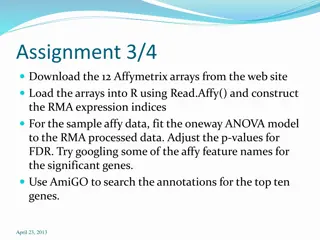SPSS One-Way ANOVA at California State University Northridge
The SPSS statistical package is used for conducting One-Way ANOVA to analyze differences between groups on a dependent variable. This guide covers how to run One-Way ANOVA in SPSS at the Department of Psychology, California State University Northridge. It includes step-by-step instructions with visual aids for setting up and interpreting the analysis, including post hoc tests. Learn how to move variables, select options, and interpret results effectively.
Download Presentation

Please find below an Image/Link to download the presentation.
The content on the website is provided AS IS for your information and personal use only. It may not be sold, licensed, or shared on other websites without obtaining consent from the author.If you encounter any issues during the download, it is possible that the publisher has removed the file from their server.
You are allowed to download the files provided on this website for personal or commercial use, subject to the condition that they are used lawfully. All files are the property of their respective owners.
The content on the website is provided AS IS for your information and personal use only. It may not be sold, licensed, or shared on other websites without obtaining consent from the author.
E N D
Presentation Transcript
SPSS SPSS Statistical Package for Social Sciences One-Way ANOVA Department of Psychology California State University Northridge www.csun.edu/plunk
One One- -Way ANOVA Way ANOVA One-Way ANOVA examines differences between two or more groups on a dependent variable. Although SPSS has a way to run one-way ANOVA (see figure 1), it does not have an option for the effect size. I show this method starting on slide 11. So, run a one-way ANOVA by using the general linear model command instead (see Figure 2). Figure 1 Figure 2
One One- -Way ANOVA Way ANOVA Move intelligence into the dependent variable box. Move the independent variable (in this case state of origin ) into fixed factors. Click on Options
One One- -Way ANOVA Way ANOVA Under Options , click Descriptive statistics (which will print means and standard deviations for the IV), Estimates of effect size and Observed power . I will generally examine homogeneity tests also. Click Continue
One One- -Way ANOVA Way ANOVA In the univariate window, click on Post Hoc Since there are more than two groups, a post hoc analysis will need to be conducted if there are significant differences
One One- -Way ANOVA Way ANOVA For this analysis, move state into the box that says Post Hoc Tests for: Then click on Tukey There are reasons to run the various types of post hoc analyses (but they are not discussed here) Click continue
One One- -Way ANOVA Way ANOVA Click OK .
One One- -Way ANOVA Way ANOVA One-Way ANOVA indicated no significant differences between people from New York City (M = 3.96, SD = 1.21), Los Angeles (M = 3.95, SD = 1.18), and Enid (M = 3.93, SD = 1.18) on intelligence level, F(2,2752) = .18, p = .94, p2 = .00. Note: p2 is the partial eta squared Note: Since the F value was not significant, the post hoc analyses do not need to be examined. Notice that none of the pairwise comparisons are significant.
One One- -Way ANOVA Way ANOVA Move Quality of Life into the dependent variable box. Move the independent variable (in this case state of origin ) into fixed factors. Then, repeat the steps above.
One One- -Way ANOVA Way ANOVA One-way ANOVA indicated significant differences between people from different states on quality of life, F(2,2680) = 8.81, p < .001, p2 = .007. Specifically, post hoc analyses using Tukey HSD indicated that people from Enid (M = 2.71, SD = 0.75) reported significantly higher quality of life than people from New York City (M = 2.58, SD = 0.74, p = .002) and Los Angeles (M = 2.58, SD = 0.73, p < .001). Note: Since the F value was significant, the post hoc analyses do need to be examined. The significant levels (i.e., p values) of the pairwise comparisons are where it says Sig. .
One One- -Way ANOVA Way ANOVA One-Way ANOVA examines differences between two or more groups on a dependent variable. In this example, the One-Way ANOVA option will be conducted.
One One- -Way ANOVA Way ANOVA Move Quality of Life into the dependent variable box. Move the independent variable (in this case state of origin ) into fixed factors. Click on Options
One One- -Way ANOVA Way ANOVA Under Options , click Descriptive (which will print means and standard deviations for the IV). I will generally examine homogeneity tests also. Click Continue
One One- -Way ANOVA Way ANOVA Click on Post Hoc Since there are more than two groups, a post hoc analysis will need to be conducted if there are significant differences to determine which groups are significantly different.
One One- -Way ANOVA Way ANOVA Click Tukey There are reasons to run the various types of post hoc analyses (but they are not discussed here) Click continue
One One- -Way ANOVA Way ANOVA Click OK .
One One- -Way ANOVA Way ANOVA One-way ANOVA indicated significant differences between people from different states on quality of life, F(2,2680) = 8.81, p < .001. Specifically, post hoc analyses using Tukey HSD indicated that people from Enid (M = 2.71, SD = 0.75) reported significantly higher quality of life than people from New York City (M = 2.58, SD = 0.74, p = .002) and Los Angeles (M = 2.58, SD = 0.73, p < .001). Note: Since the F value was significant, the post hoc analyses do need to be examined. The significant levels (i.e., p values) of the pairwise comparisons are where it says Sig. .
